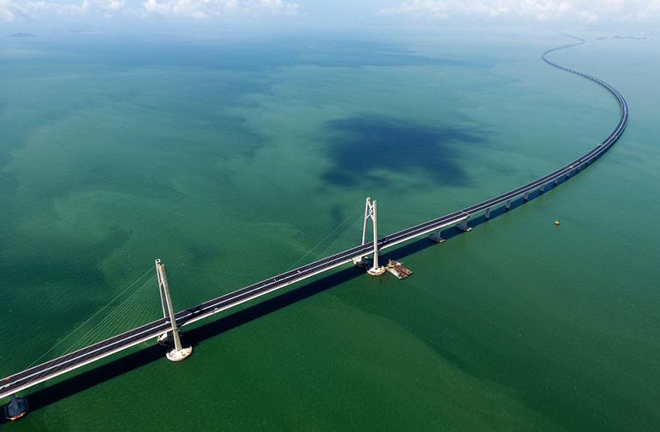Development of Greater Bay Area heralds bright future

The Hong Kong-Zhuhai-Macao Bridge Photo: XINHUA
On Feb. 18th, the Central Committee of the Communist Party of China (CPC) and the State Council jointly issued the Outline Development Plan for the Guangdong-Hong Kong-Macao Greater Bay Area, which clarifies the strategic positioning of the Greater Bay Area.
Wang Jun, president of theGuangdong Academy of Social Sciences, said that the development of the Greater Bay Area is not only a new attempt to break new ground in opening up on all fronts in a new era, but also a step forward in the practice of “one country, two systems,” which raises new requirements for the communication and cooperation of the governments of Guangdong, Hong Kong and Macao.
Li Shanmin, vice president of Sun Yat-sen University (SYSU), said that from the perspective of building an international innovation and technology hub, the Greater Bay Area has seen a “science spring.” The Outline Development Plan put forward that the building of an international innovation and technology hub is not only a strategic decision based on long-term development, but also a crucial task for the Greater Bay Area. Meanwhile, it can also promote development through innovation-driven strategy and spur on the development of countries along Belt and Road routes.
Yuan Chiping, a professor from the Institute of Guangdong, Hong Kong and Macao Development Studies at SYSU, said that over the past 40 years of reform and opening up, there have been a series of institutional innovations, and the cooperation of Guangdong, Hong Kong and Macao came into being, driven by the market. At this new threshold, institutional innovation is still the starting point to spur on vitality, and the reform experiment in specific zones such as the Greater Bay Area is of great significance for institutional innovation.
Wang added that we should rely on the interconnectivity of facilities to drive the interconnectivity of rules. First, we should build up-to-date public facilities for information technology, such as expanding the bandwidth capacities of international internet communication gateways and building 5G networks. Second, we should launch some large-scale infrastructure projects that support overall development, such as the construction of harbors, docks, roads, high-speed railways, bridges, airports and water conservancy projects. Third, measures should be taken to build a public service system that is beneficial to the effective flow of talent and residents and to enhance people’s sense of fulfillment through the improvement of public services’ quality and standards. For instance, we can optimize the “144-hour Facilitation Visa” policy in the Pearl River Delta region and allow people from Hong Kong and Macao who live and work in Guangdong to enjoy the same treatment as Mainland residents in terms of education, medical treatment, elderly care, housing, transportation and other aspects related to people’s livelihood.
edited by SU XUAN
